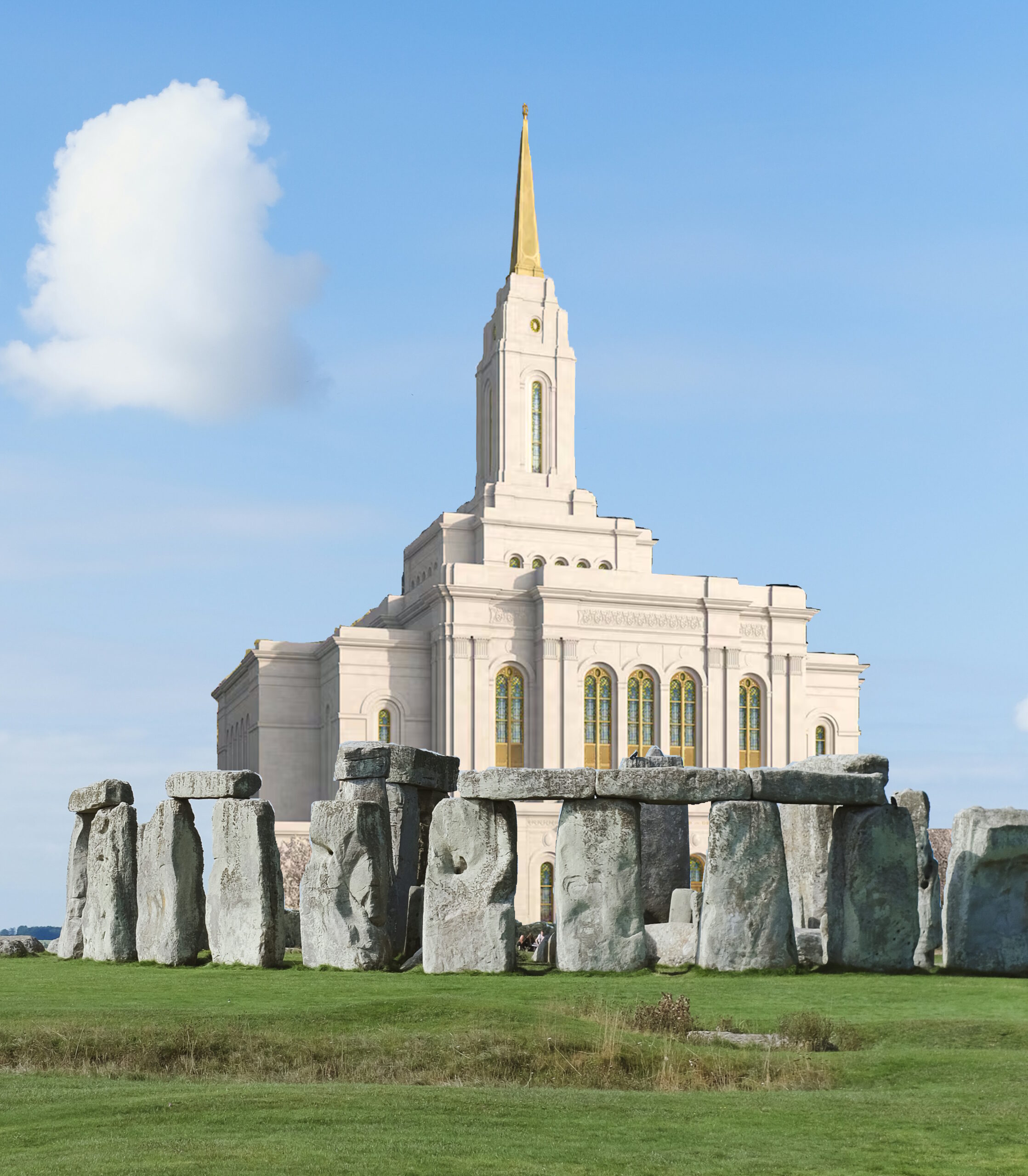Flush with success after its recent purchase of the Kirtland Temple from its sibling church, Community of Christ, the Church of Jesus Christ of Latter-day Saints announced today that it will be attempting to purchase other historic religious sites. Spokesman Orson Pratt-Whitney-Young explained that although the Church has expanded its temple-building program under the leadership of President Russell M. Nelson, that the acquisition of the Kirtland Temple “opened his mind to a vision of expanding our temple program in another direction.” Specifically, Pratt-Whitney-Young explained that the Church will be making offers of purchase on historic religious sites all over the world that are not related to the Latter-day Saint tradition.

For example, the Church has communicated to the government of England an interest in purchasing Stonehenge, the famed prehistoric megalithic structure. Although the site dates back to around 3100 BC and the Latter-day Saint Church only to 1830 AD, Pratt-Whitney-Young explained that some members of the Church believe there is a connection through the Jaredites, a group of people who fled the Tower of Babel in one of the faith’s books of scripture, the Book of Mormon. (In a later question-and-answer session, Young added that a former Church member is planning to publish a book outlining the connection, to be titled The Stonehenge Hypothesis.) Although the Crown has shown no interest in selling, Pratt-Whitney-Young maintained that the Church remains hopeful. He supplied an artist’s rendition of what the site would look like after the Church had made some “minor modifications” to “ensure the security of the site.” All would be welcome to visit the site once the Church owned it, he explained, although only qualified members of the faith would be permitted in the “tastefully small” Latter-day Saint temple to be built inside the iconic ring of massive stones.
In addition to Stonehenge, Pratt-Whitney-Young listed the following sites that the Church will be attempting to purchase from their current owners:
- Notre-Dame de Paris in Paris, France
- Hagia Sofia Grand Mosque in Istanbul, Turkey
- The statue Christ the Redeemer in Rio de Janeiro, Brazil
- Saint Basil’s Cathedral in Moscow, Russia
Pratt-Whitney-Young conceded on questioning that none of the other governments or religious organizations who currently own these sites has shown interest in selling. He pointed out, though, that the Latter-day Saint Church has “been led to amass great wealth by the hand of the Lord” (the Church has large real estate holdings, as well as a stock portfolio valued in the hundreds of billions of dollars) and that this wealth might be used to change the minds of reluctant government and religious officials. “Governments trust in the arm of flesh, and this leads them to the iniquity of endless borrowing,” he explained. “Perhaps one day when their debt grows too great, they will see the wisdom in accepting our offers.”
I watched Spinal Tap yesterday and just now lost it over the short Stonehenge pillars! Thanks for the smart writing and the humor. Love all the hyphens in the guy’s name. Lol
Given your other examples of religious buildings and sites in this April Fool’s post, the initial jump from the Kirtland Temple to Stonehenge was interesting and unique. Any specific reason you used Stonehenge as your example, or is that just what popped into your mind?
I ask because a few weeks ago, I wrote a few posts connecting the Kirtland Temple to the symbol of Pi. Not only will the upcoming solar eclipse on April 8 pass over the Kirtland Temple at 3:14pm (the number of Pi), but the symbol on the east face of the Kirtland Temple that has the “House of the Lord” wording on it is the symbol of Pi: two pillars and a horizontal beam connecting them on top, which I have also viewed as a door or gate. That symbol is the same shape as the Stonehenge pillars. Here is one of those posts:
https://coatofskins.blogspot.com/2024/03/pi-and-kirtland-temple.html
I actually didn’t make the initial connection to the shapes at Stonehenge, though. Another blogger wrote a short note after reading my posts with that observation. In doing so, he referenced the scene from Spinal Tap just as Sharon Gannaway did in the comment above.
https://narrowdesert.blogspot.com/2024/03/pi-in-sky-where-moon-doth-rise-with.html
I’ve heard that they are contemplating purchasing all of the Masonic temples in the world and retrofitting them.
Regarding Stonehenge: you may be interested to know that an englishman named Matthew P. Gill, formerly a member of the Church of Jesus Christ of Latter-day Saints, left that church in 2005 after claiming to have been given an ancient record of a christian people that migrated to England after the tower of Babel and built Stonehenge by the last prophet and sole survivor of that people (who finished compiling the record that his father, also a prophet, started). I read the resulting book, “The Book of Jeraneck”, and I found that it was almost plot point for plot point identical to the Book of Mormon. It was quite intriguing though
L, that’s amazing! Thanks for supplying the connection. Now that you mention it, I swear I’ve heard of The Book of Jeraneck somewhere before, but I hadn’t even thought of the connection before writing this. That’s awesome that it’s connected to Stonehenge! Maybe the author of The Stonehenge Hypothesis should be referencing it!
William Wright, interesting connection! (Sorry for not responding earlier–I had to fish your comment out of the spam filter.) I just chose Stonehenge because it would be easiest to photoshop an image of an LDS temple in while making obvious that the original site was still there. Sorry it wasn’t a more interesting reason!
It appears that I wasn’t the only one thinking along these lines.
https://www.wayfaremagazine.org/p/lds-church-purchases-westminster